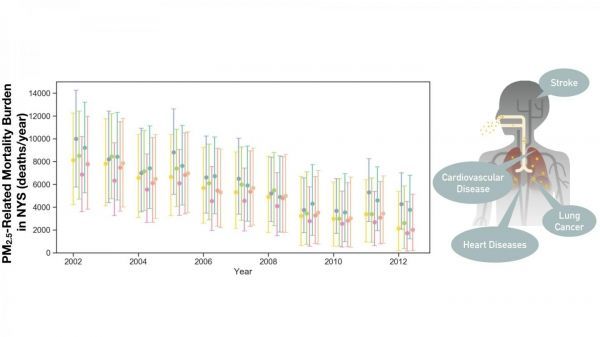Lower air pollution levels saved an estimated 5,660 lives in New York State in 2012, compared to 2002 levels, according to a new study.
Published in Environmental Research Letters, the study — led by Columbia University’s Lamont-Doherty Observatory atmospheric chemistry research group — looked at New York State levels of a specific kind of pollution known as fine particulate matter, or “PM2.5.” These microscopic particulates are a mixture of solid particles and liquid droplets. Some come from burning fuel, and others form in the atmosphere as a result of complex reactions of chemicals such as sulfur dioxide and nitrogen oxides from power plants, industries and automobiles. Long-term exposure to PM2.5 can lead to respiratory and cardiovascular problems.
The study compared seven datasets, including both on-the-ground and satellite measurements, to analyze trends in PM2.5 levels across New York State. The researchers found that PM2.5 levels dropped by 28 to 37 percent between 2002 and 2012. They calculated that this drop cut the air pollution mortality burden for New York State residents by 67 percent — from 8,410 premature deaths in 2002 to 2,750 deaths in 2012.
Read more at: Earth Institute at Columbia University
A new study charts declines in New York State air-pollution-related deaths due to various ailments over a decade. (Photo Credit: Courtesy Xiaomeng Jin)


